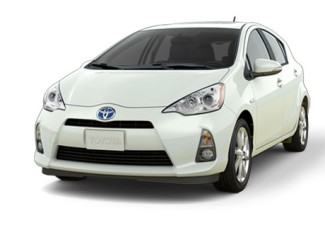In his State of the Union address, President Obama rightly pointed to a thriving domestic auto industry as a bright spot in the U.S. economy. It’s a good time to recall that the government’s 2008-2009 intervention on behalf of GM and Chrysler played a big role in that outcome, as did energy efficiency.
The domestic industry’s inability to deliver high quality, fuel-efficient cars was a major factor in the dire financial situation that led to the two bankruptcies. So, in the course of the government-assisted restructuring, the auto industry endorsed the administration’s ambitious new Corporate Average Fuel Economy (CAFE) standards, projected to nearly double the fuel economy of cars and light trucks by 2025, when they were proposed in 2011.
Yet, at this year’s Detroit Auto Show, manufacturers left little doubt they would seek to weaken the 2025 CAFE standards in the upcoming “midterm review” of the program. They argue that low gas prices will keep consumers from buying the advanced vehicles needed to meet the standards. But in fact, the standards rely very little on sales of electric or other advanced technology vehicles. The vast majority of fuel economy gains between now and 2025 are expected to come from gradual improvements to conventional vehicles: better engines, advanced transmissions, mass reduction. The role of CAFE standards is to ensure that all manufacturers adopt such advances across their product lines, even as fuel prices fluctuate.
While the standards can keep technology moving forward, they can’t stem enthusiasm for larger vehicles when gas prices plummet. It is important to realize that such episodes will not prevent manufacturers from meeting the standards, because mile-per-gallon targets under CAFE decline if the size of vehicles grows. A bigger fleet will, however, erode the fuel savings and greenhouse gas emissions reductions of the CAFE program.
That problem calls for a different solution. As many have noted, today’s low fuel prices offer a great opportunity to rethink the federal gasoline tax, which has remained at 18.4 cents per gallon for over two decades. A $3-per-gallon floor on the pump price of gasoline would bolster auto manufacturers’ confidence in their technology investments and nudge consumers towards more fuel-efficient and predictable vehicle purchase and travel choices. It’s tempting to suggest using the resulting revenue to fill the gaping hole in the Highway Trust Fund. But first, let’s see whether the new Congress takes note of the shifts in Americans’ travel habits as they set priorities for infrastructure investment in this year’s transportation bill.



